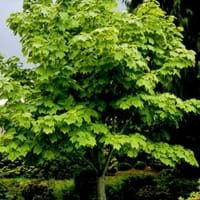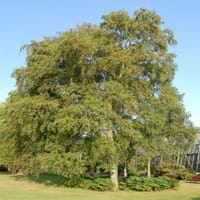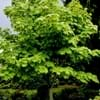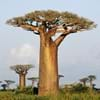Life Span
Perennial
Perennial
Origin
Northeastern United States, Mid-Atlantic United States, Southeastern United States, Canada
Northern Europe, Russia/Siberia
Types
Not Available
Young's weeping birch, Ornäs Birch
Habitat
moist forests, Slopes
Sunny Edge, Woodland Garden Canopy
USDA Hardiness Zone
3-7
2-7
Sunset Zone
Not Available
A2, A3, 1a, 1b, 2a, 2b, 3a, 3b, 4, 5, 6, 7, 8, 9, 10, 11, 12, 14, 15, 16, 17, 18, 19, 20, 21, 22, 23, 24
Habit
Upright/Erect
Pyramidal
Flower Color
Yellow, Yellow green
Green
Flower Color Modifier
Bicolor
Bicolor
Fruit Color
Green, Brown
Black
Leaf Color in Spring
Light Green
Light Green
Leaf Color in Summer
Green
Dark Green
Leaf Color in Fall
Yellow
Light Yellow, Yellow green
Leaf Color in Winter
Not Available
Not Available
Leaf Shape
Maple shaped
Double-toothed, serrated
Plant Season
Not Available
Spring, Summer, Fall, Winter
Sunlight
Partial Sun, Partial shade
Full Sun, Partial Sun
The pH of Soil
Acidic, Neutral
Acidic, Neutral, Alkaline
Soil Drainage
Well drained
Average
Bloom Time
Early Spring, Spring
Spring
Tolerances
Not Available
Wet Site, Drought
Where to Plant?
Ground
Ground
How to Plant?
Layering, Seedlings, Stem Cutting
Seedlings
Plant Maintenance
Medium
Medium
Watering Requirements
Requires regular watering
Water more in summer
In Summer
Lots of watering
Lots of watering
In Spring
Moderate
Moderate
In Winter
Average Water
Average Water
Soil pH
Acidic, Neutral
Acidic, Neutral, Alkaline
Soil Drainage Capacity
Well drained
Average
Sun Exposure
Partial Sun, Partial shade
Full Sun, Partial Sun
Pruning
Prune if you want to improve plant shape
Remove damaged leaves, Remove dead branches, Remove dead leaves
Fertilizers
All-Purpose Liquid Fertilizer
General purpose granulated 30-10-10 fertilizer
Pests and Diseases
Anthracnose, Bacterial leaf scorch, Bleeding canker, Decline, Fomes root rot, Ganoderma root rot, Laetiporus root rot, Leaf spot, Powdery mildew, Red blotch, Tar spot, Verticillium Wilt
Anthracnose, Birch Leafminer, Bronze Birch Borer, Slime Flux
Plant Tolerance
Drought
Drought
Flowers
Insignificant
Showy
Flower Petal Number
Single
Single
Foliage Texture
Coarse
Medium
Foliage Sheen
Matte
Glossy
Attracts
Not Available
Butterflies, Insects, Moths
Allergy
Asthma, Runny nose, Skin irritation
Pollen
Aesthetic Uses
Showy Purposes
Used in parkland
Beauty Benefits
Not Available
Not Available
Environmental Uses
Air purification
Air purification
Medicinal Uses
Antirheumatic, Cold, Cough, Emetic, gonorrhoea, Kidney problems, Pectoral, Swelling, Vomiting
anti-inflammatory, Antirheumatic, Antiseptic, Astringent, Diaphoretic, Diuretic
Part of Plant Used
Leaves, Sap
Flowers, Inner Bark, Leaves, Sap
Other Uses
Used as Ornamental plant, Used as preservative
Used as a thickener in soups, Used as essential oil, used for making charcoal, Used in making tea
Used As Indoor Plant
No
No
Used As Outdoor Plant
Yes
Yes
Garden Design
Feature Plant
Feature Plant, Screening / Wind Break, Shade Trees, Street Trees
Botanical Name
ACER pensylvanicum
BETULA pendula
Common Name
Moosewood, striped maple, moose maple
Common Birch, European White Birch, Silver Birch
In Hindi
धारीदार मेपल
Silver Birch
In German
gestreifte Ahorn
Weißbirke
In French
érable rayé
Silver Birch
In Spanish
arce rayado
Abedul de plata
In Greek
ριγέ σφενδάμου
Silver Birch
In Portuguese
plátano listrada
Silver Birch
In Polish
paski klonu
Silver Birch
In Latin
alba acernis
Argentum Birch
Phylum
Magnoliophyta
Magnoliophyta
Class
Magnoliopsida
Magnoliopsida
Family
Aceraceae
Betulaceae
Clade
Angiosperms, Eudicots, Rosids
Angiosperms, Eudicots, Rosids
Tribe
Not Available
Not Available
Subfamily
Not Available
Betuloideae
Number of Species
Not Available
Not Available
Importance of Moosewood Tree and Silver Birch
Want to have the most appropriate plant for your garden? You might want to know the importance of Moosewood Tree and Silver Birch. Basically, these two plants vary in many aspects. Compare Moosewood Tree and Silver Birch as they differ in many characteristics such as their life, care, benefits, facts, etc. Every gardener must at least have the slightest clue about the plants he wants to plant in his garden. Compare their benefits, which differ in many ways like facts and uses. The medicinal use of Moosewood Tree is Antirheumatic, Cold, Cough, Emetic, gonorrhoea, Kidney problems, Pectoral, Swelling and Vomiting whereas of Silver Birch is anti-inflammatory, Antirheumatic, Antiseptic, Astringent, Diaphoretic and Diuretic. Moosewood Tree has beauty benefits as follows: Not Available while Silver Birch has beauty benefits as follows: Not Available.
Compare Facts of Moosewood Tree vs Silver Birch
How to choose the best garden plant for your garden depending upon its facts? Here garden plant comparison will help you to solve this query. Compare the facts of Moosewood Tree vs Silver Birch and know which one to choose. As garden plants have benefits and other uses, allergy is also a major drawback of plants for some people. Allergic reactions of Moosewood Tree are Asthma, Runny nose and Skin irritation whereas of Silver Birch have Pollen respectively. Having a fruit bearing plant in your garden can be a plus point of your garden. Moosewood Tree has no showy fruits and Silver Birch has no showy fruits. Also Moosewood Tree is not flowering and Silver Birch is not flowering . You can compare Moosewood Tree and Silver Birch facts and facts of other plants too.





